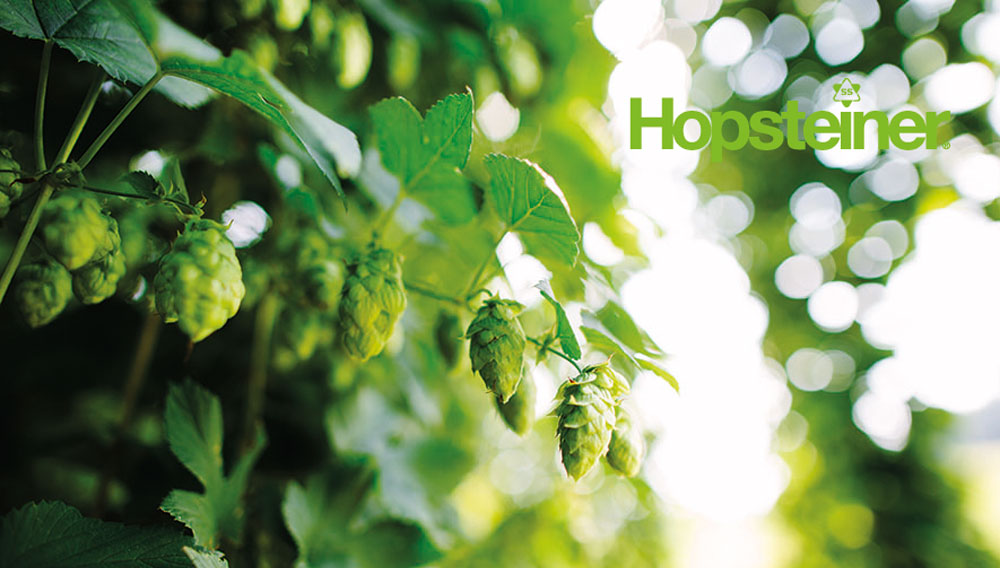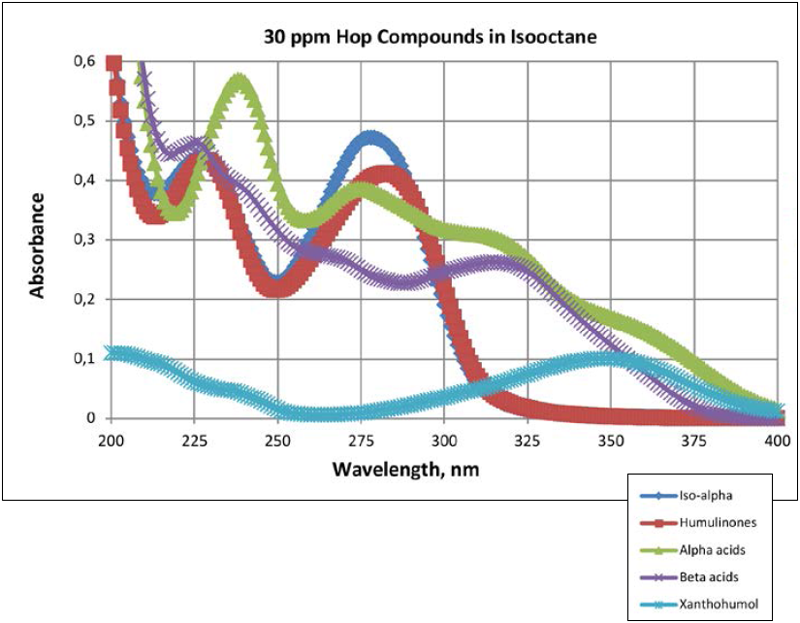New England IPA and the International Bitterness Unit Test
Hopsteiner Newsletter 05/2019 – The International Bitterness Units test, IBU, was developed in the 1960’s to measure the iso-alpha acid concentration in beer. The test is a simple liquid-liquid extraction where 10 ml of beer is extracted with 20 ml of acidified isooctane by shaking the two in a testtube for 15 minutes.
The iso-alpha acids in the beer get extracted into the isooctane layer and can be measured using a UV spectrometer at a wavelength of 275 nm. Beers that are dry hopped like New England IPAs contain additional hop acids including humulinones, alpha acids, beta acids and the hop polyphenol xanthohumol. These hop compounds are also extracted into isooctane and absorb at 275 nm and therefore interfere with the IBU test result.
The below graph shows the UV absorbance spectra of each hop compound at concentration of 30 ppm in isooctane. Their corresponding response factors, at 275 nm, were calculated and found to be 0.7 for iso-alpha acids, 0.6 for humulinones, 0.6 for alpha acids, 0.4 for beta acids and 0.07 for xanthohumol. Many New England IPAs have humulinones and alpha acids concentrations greater than iso-alpha acids, yet these hop acids are only 2/3 respectively 1/10 as bitter than iso-alpha acids; and yet absorb nearly 86 % as much as iso-alpha acids at 275 nm.
The increase in the IBU value caused by dry hopping falsely indicates an increase in bitterness. Although humulinones, alpha acids and beta acids absorb nearly as intensely at 275 nm as iso-alpha acids, they only provide a fraction of the bitterness compared to iso-alpha acids.
This generally means the sensory bitterness of New England IPAs are a little more than half of what the IBU test result would indicate.
If you are interested to learn more about dry hopping please feel free to contact https://www.hopsteiner.com
Source
Simon H. Steiner, Hopfen, GmbH, Mainburg, Germany



